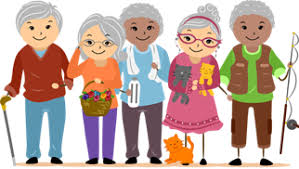Nuance Audio is a new option for people who resist traditional aids, from the company that makes Ray-Bans and operates LensCrafters.
Seekers of Meaning Podcast Posted Online March 7, 2025
What's Next Longevity Deal Talk Episode 32, January, 2025
Presentation: What's Next Longevity Venture Summit, June, 2025
WAWABILITY 2025, Washington DC, July, 2025

 Getty images show advertising’s ageist stereotypes. A new report from AARP this week zeros in on something we all knew:
Getty images show advertising’s ageist stereotypes. A new report from AARP this week zeros in on something we all knew:  More smarts are moving into tech for older adults. AI capabilities combined with a Voice First interface is increasingly expected – and so they are part of new offerings to help older adults, both living at home or in senior living communities. Will older adults be comfortable with them? Will they be used effectively to help them remain as safe, independent and/or well as possible? These remain to be validated, but between the smarter homes and the smart devices, we are heading into another wave of innovation. Here are six technologies (alphabetical order) entering the space – information is drawn from firm websites:
More smarts are moving into tech for older adults. AI capabilities combined with a Voice First interface is increasingly expected – and so they are part of new offerings to help older adults, both living at home or in senior living communities. Will older adults be comfortable with them? Will they be used effectively to help them remain as safe, independent and/or well as possible? These remain to be validated, but between the smarter homes and the smart devices, we are heading into another wave of innovation. Here are six technologies (alphabetical order) entering the space – information is drawn from firm websites: Google discovers seniors (sort of) and thus a market is maybe born. There was a breathlessness to the CNBC article on July 23, 2018 – Google is mulling
Google discovers seniors (sort of) and thus a market is maybe born. There was a breathlessness to the CNBC article on July 23, 2018 – Google is mulling